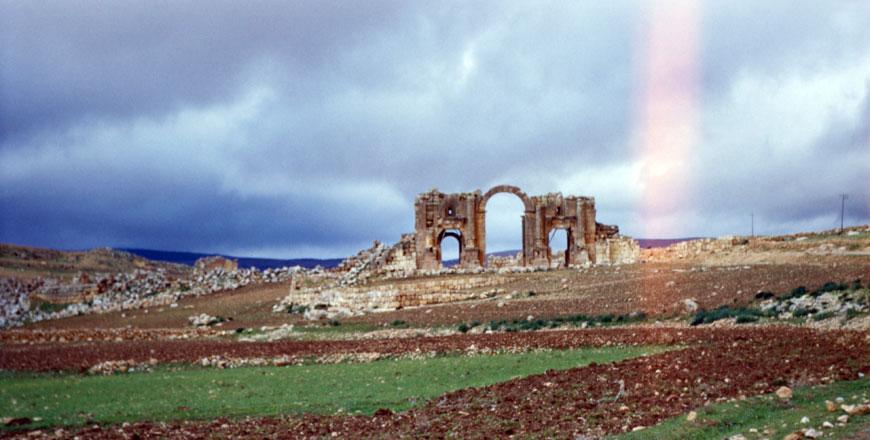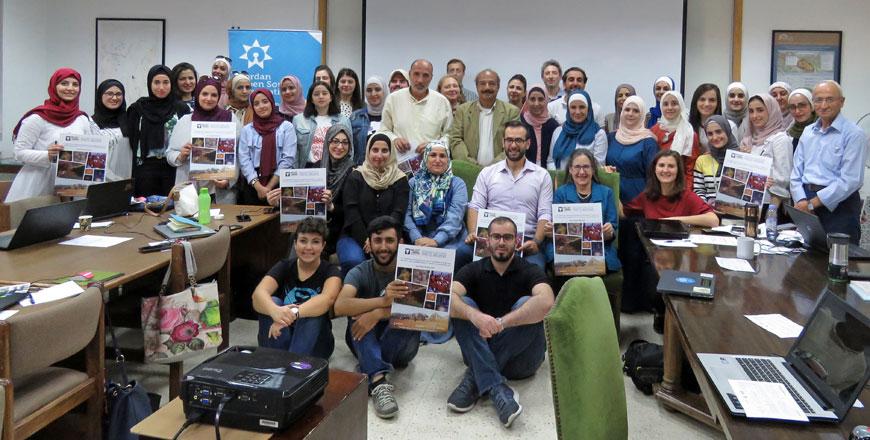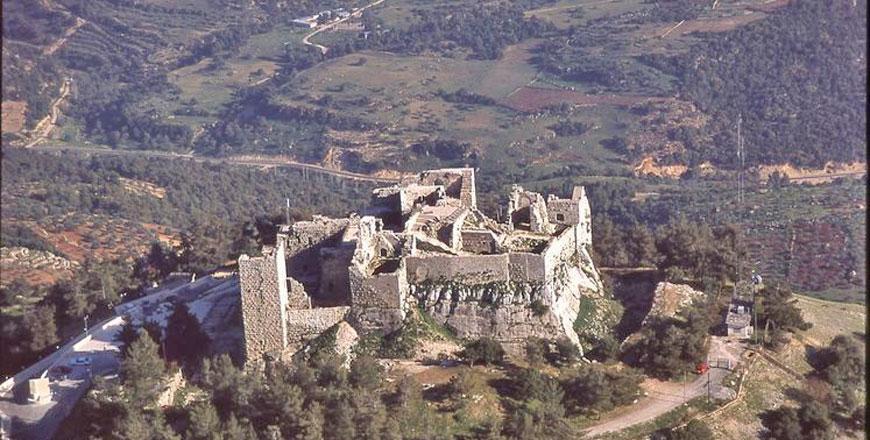You are here
Digital archive aims to preserve Jordan’s past for future generations
By Saeb Rawashdeh - Jul 01,2019 - Last updated at Jul 02,2019

A photograph from the American Centre of Oriental Research’s George Bass collection of Hadrian’s Arch, South Gate, in Jerash, Jordan, in 1955 before development (Photo courtesy of ACOR)
AMMAN — In spite of the widespread destruction of cultural heritage, a team of experts and interns recently finished digitising a private photo archive as part of a bid to save Jordan’s records and provide people with a resource to study the country’s history.
The aim of the American Centre of Oriental Research’s (ACOR) four-year project, which started in 2016, has been to preserve photographs of cultural sites in Jordan and the region.
‘‘In the last six months, the ACOR Photo Archive team has completed the digitisation of 7,000 photographs that make up the Jane Taylor collection, and it now has five other collections available, donated by journalist Rami Khouri, archaeologists George Bass, Linda Jacobs and Robert Schick and Charles Wilson,” said Jessica Holland, a project archivist, noting that the entire collection contains around 15,000 images.
In November of last year, Holland and assistant librarian Samya Kafafi presented the archive at the Jordanian School Librarians’ conference in Amman, in a bid to raise awareness among school teachers of the project as a resource for high-school students. Former associate director of ACOR Glenn Corbett also showcased the project at the American Schools of Oriental Research in Denver, where he highlighted the potential of the archive to aid researchers internationally.
In order to protect these photographs properly they must be kept in archival conditions with controlled exposure to variables such as temperature changes, or decaying materials such as old plastics, Holland underlined, adding that finding archival quality storage materials to ensure that the photos remained in excellent condition for years to come presented “a challenge in Jordan”.
‘‘Essential items such as acid-free plastic sheets to store slides and transparencies are not available, so the team brings these from abroad regularly,’’ she emphasised.
The archivists also had to tackle a lack of professional photograph scanning, which they did by teaching “a series of project archivists who were in residence for six month-periods”, Holland explained.
The Jane Taylor collection at ACOR encompasses photography of the Arab region from the mid-1970s until the early 2000s, and includes subjects ranging from ancient archaeology to modern daily life, she said, adding that Taylor lived in Amman from 1989 to 2015, during which she wrote and photographed Jordan “prolifically, as well as travelled extensively around the region, photographing culturally significant subjects in Yemen, Turkey, Iraq, Saudi Arabia, Lebanon and Syria”.
“Taylor’s collection is characterised by a desire to tell exciting stories of people and places of times past, as well as of contemporary culture,” Holland emphasised.
Another collection follows the life of George Bass, a pioneer of nautical archaeology and director of the first archaeological expedition to entirely excavate an ancient shipwreck, according to Holland.
In 1973, he founded the Institute of Nautical Archaeology at College Station, Texas, Holland elaborated, adding that Bass’ collection offers ‘‘rare insight into famous heritage sites from over half a century ago, as well as the impressions and escapades of Bass as a young man travelling through the region in 1955-56, shared through his letters. Bass was travelling through the Mediterranean and the Arab region by boat, plane and bicycle’’.
‘‘Bass had a keen interest in archaeology, and his letters from the trip mention the promise of future digs by various experts in the field,” Holland said. “Whilst in Jordan, Bass attempted to travel to Petra, having been given a letter of introduction to the excavation director there at the time, William Foxwell Albright, who [later] described him as ‘one of my best students’.”
Because of flooding, he could not make it to Petra at the time, but he described some of the highlights of his journey, Holland said.
“Crawling through 3,000-year-old tunnels in the middle of the night and waist deep in water, bicycling from Jericho [the oldest walled city in the world] to the Dead Sea and back.”
Related Articles
AMMAN — Given the numerous threats facing archaeological and cultural heritage sites in Jordan and the region, whether from war, development
AMMAN — Fifty students, recent graduates, heritage professionals and journalists gathered on Monday to learn how to edit and create Wikipedi
AMMAN — The American Centre of Oriental Research (ACOR) has started digitalising images and photo collections with the aim of preserving the













